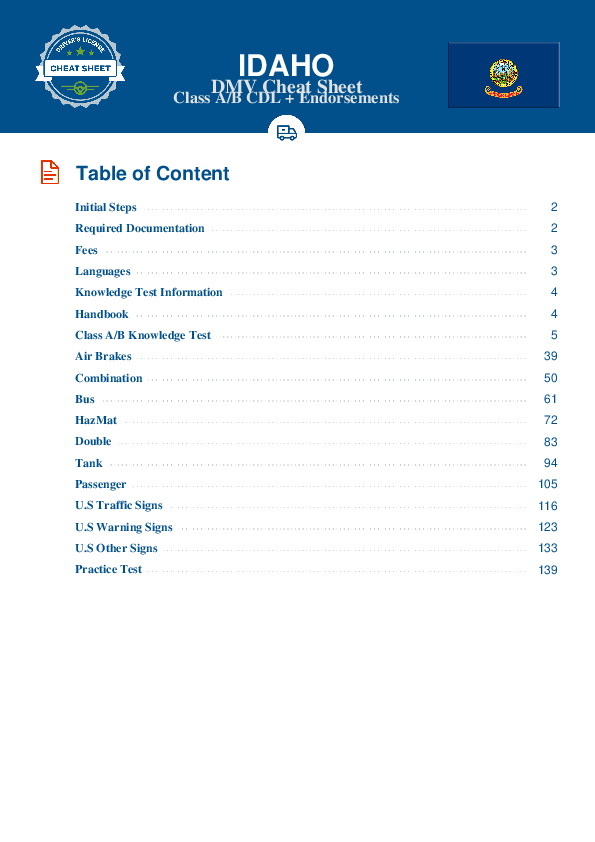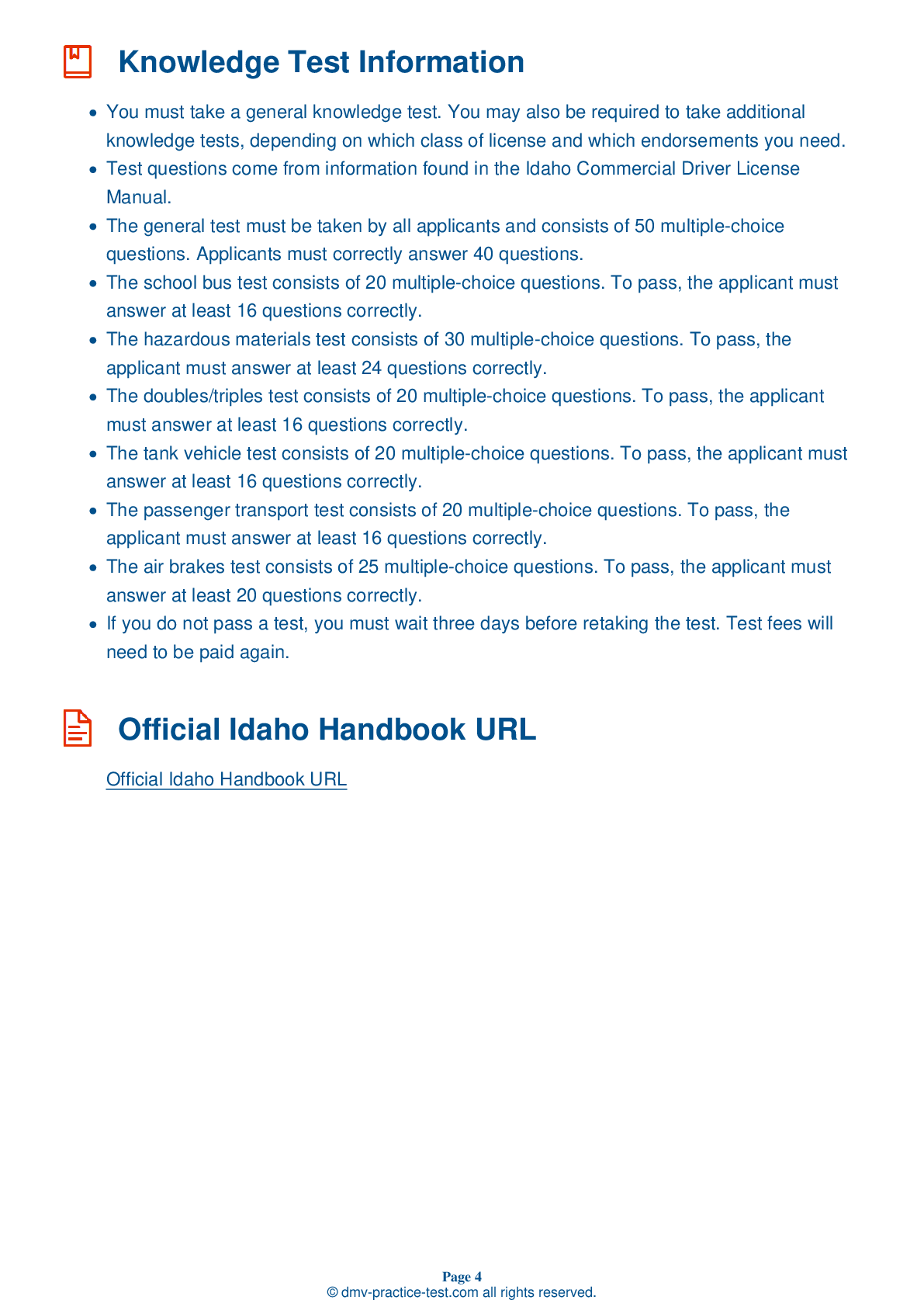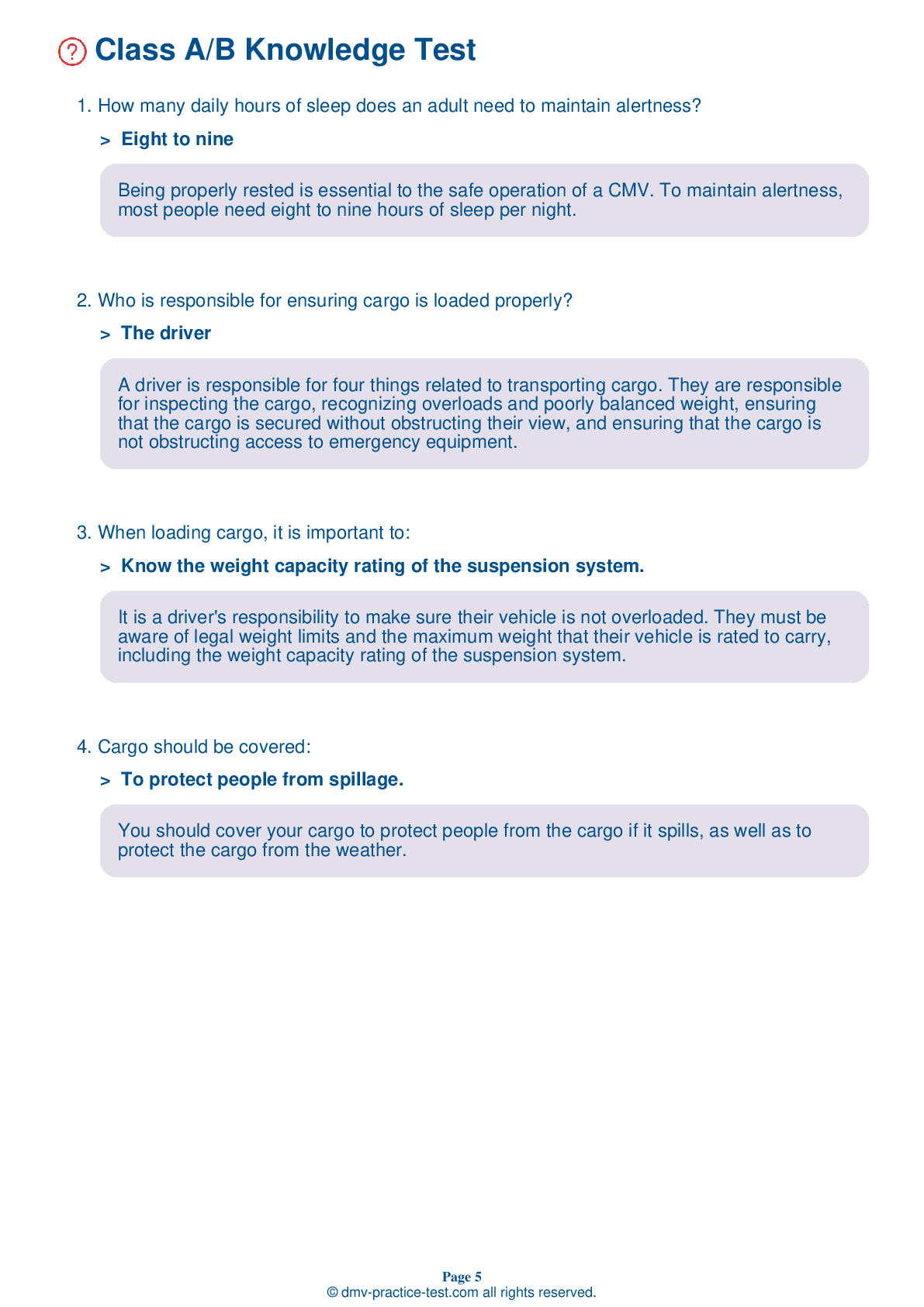Double Triple Test | Idaho 2025 #2 Page 3 of 3
Train for FREE with our Idaho CDL double triple practice test online. The official exam test consists of several obligatory parts, with all of them checking your knowledge of different blocks of road rules. If you need to obtain a ID CDL double triple license in 2025, practice as much as possible. Free sample tests published on our website will help you check and improve your knowledge and boost your grades. Please bear in mind that DMV requirements may vary from state to state.
15 . A low air pressure warning signal should activate:
In an air brake system, a low air pressure warning signal must come on if air pressure in the tanks falls below 60 psi. This warning signal may come in the form of a light, a buzzer, or a wig wag.
16 . A truck should be parked:
Because you can't see everything behind you, backing is always dangerous and should be avoided whenever possible. Choose parking spaces from which you can pull forward when you leave.
17 . What should you do if the braking system cannot build up hydraulic pressure?
If your hydraulic braking system will not build up the pressure needed to slow or stop your vehicle, there are a few possible solutions. Try shifting into a lower gear, pumping the brakes, and/or using the emergency brake.
18 . If the coolant temperature gauge goes above the highest safe temperature, you should:
If the coolant temperature gauge goes above the highest safe temperature, you should stop driving as soon as possible and try to figure out what is wrong. There could be an issue in your vehicle that could lead to engine failure and possibly a fire.
19 . Braking mechanisms are located inside:
Drum brakes are attached to the wheels and located on the axles of a vehicle. The braking mechanisms that cause the vehicle to stop can be found inside of a drum brake.
20 . When loading a trailer, you should:
A load of cargo must be properly balanced. Placing too much weight over an axle can damage the axle and make it more difficult for you to steer. Placing too little weight over an axle can cause poor traction, also leading to difficult handling.
See the exact questions that will be on the 2025 Idaho DMV exam.
99.2% of people who use the cheat sheet pass the FIRST TIME
Lillian MCcranie explains how our CDL study guide was helpful in passing the exam and recommends it to everyone.
Cameron tells us how he purchased the CDL exam, and found it to be a useful tool which helped him pass the exam and find a job.



